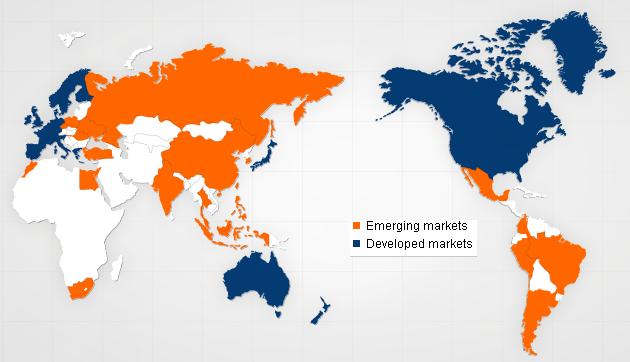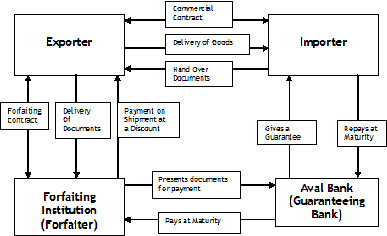Three interrelated developments in global capital markets are: The sustained rise in gross capital flows relative to net flows; The increasing importance of securitized forms of capital flows; and The growing concentration of financial institutions and financial markets. Taken together these trends may signal what some others have referred to as a ‘quiet opening’ of the capital account of the balance of payments, which is resulting in the development, strengthening and growing integration of domestic financial systems within the international financial system. Finance is being rationalized across national borders, resulting in a breakdown in many countries in the distinction between onshore and offshore finance. It is particularly evident and most advanced in the wholesale side of the financial industry, and is becoming increasingly apparent in the retail side as well. Taken together these three effects have contributed to a sharp rise in volatility — in both capital flows and asset Continue reading
International Finance
International finance is the branch of economics that studies the dynamics of foreign exchange,foreign direct investment and how these affect international trade. Also studies the international projects, international investment and the international capital flow .International Finance can be broadly defined, as the study of the financial decisions taken by a multinational corporation in the area of international business i.e. global corporate finance. International finance draws much of its background from the preliminary studies in the topics of corporate finance such as capital budgeting, portfolio theory and cost of capital but now viewed in the international dimension.
Emerging Markets for International Capital Investments
Of late emerging markets have become a buzzword among the international investors for reaping greatest potential rewards which would be impossible if they stayed put in their affluent hinterlands. The term emerging markets (EMs) is a collective reference to the stock markets of the developing nations. A question, which overpowers a discerning mind, is why the international investors are looking towards emerging markets for investing their funds instead of established markets like US? Three reasons can be given to answer this question. First, the average total return of emerging markets has outstripped those of developed markets. Investments total return index computed by the IFC (International Finance Corporation) which measures the total return for each country based on those stock available to foreign investors shows that return on investment in IFC composite of EMs is 61.64 per cent higher than the return on investment in US market over the years. The Continue reading
Capital Supply and International Financial Markets
Capital flows have traditionally focused on the ‘demand side’ of emerging market financing by examining current account balances, which are equal to the net external financing needs of countries, and then seeking to identify ways in which these financing needs could be met and on what terms. However, this approach ignores trends in capital flows into and out of the major advanced economies, which are the source of most cross-border capital and the main reason why gross flows have risen so dramatically relative to net flows. These flows are typically in a securitized form and, as such, are susceptible to trading in active secondary markets. By one estimate, investors in the mature markets of Europe, the United States and Japan have been accumulating securities issued outside their own countries at the rate of about US$1 trillion a year (Smith 2000). This means that international capital flows are increasingly determined by Continue reading
Centralized Cash Management Operations of Multinational Corporations
International money managers attempt to attain on a worldwide basis the traditional domestic objectives of cash management: (1) bringing the company’s cash resources within control as quickly and efficiently as possible and (2) achieving the optimum conservation and utilization of these funds. Accomplishing the first goal requires establishing accurate, timely forecasting and reporting systems, improving cash collections and disbursements, and decreasing the cost of moving funds among affiliates. The second objective is achieved by minimizing the required level of cash balances, making money available when and where it is needed, and increasing the risk-adjusted return on those funds that can be invested. Restrictions and typical currency controls imposed by governments inhibit cash movements across national boundaries. These restrictions are different from one country to other. Managers require lot of foresight, planning, and anticipation. Other complicating factors in international money management include multiple tax jurisdictions, multiple currencies, and relative absence of Continue reading
Definition of Forfaiting
Forfaiting is a specialized form of trade finance that allows the exporter to offer extended credit to the importer. Under forfaiting , the importer gives the exporter a bundle of bills of exchange or promissory notes covering the principal amount as well as the interest. Each tranche of the notes fall due at different points of time in the future, e.g. every six months, extending up to several years. The notes are backed by an aval or guarantee provided by a reputed bank in the importer’s country. The exporter can then discount these notes without recourse with banks who specialize in the forfaiting business to generate an immediate cash flow. This means that if either the importer or the guaranteeing bank fails to pay when notes fall due, the forfaiter cannot ask the exporter for reimbursement. The credit risk is assumed entirely by the forfaiter. The forfaiter in turn, may Continue reading
Buyers Credit and Suppliers Credit
Buyer’s Credit Buyer’s Credits are a form of Eurocurrency loans designed to finance a specific transaction involving import of goods and services. Under this arrangement, lending bank(s) pay the exporter on presentation of shipping documents. The importer works out a deferred payment arrangement with the lending bank, which the bank treats as a loan. Large loans are club loans or syndicated loans. Many provisions in the loan agreement are quite similar to a general purpose syndicated credit. However, a number of formalities have to be completed before the exporter can draw funds. The interest rate of the loan is linked to a market index such as LIBOR. In some cases, a state Export Credit Agency from the exporter’s country may pay a subsidy to the banks so that an attractive funding cost can be offered to the importer. Another aspect is the Line of Credit. Lines of Credit are like Continue reading


